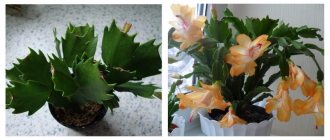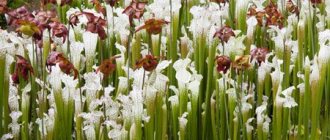Caranthus (lat. Catharanthus) is a genus of ornamental plants, represented by both herbaceous annuals and evergreen perennials, and subshrubs. Only eight of its species are known. Seven grow on the island of Madagascar, and one in India.
Abroad and in our country, catharanthus is grown as a garden and indoor plant. However, it is quite rare to see it in summer cottages and in the apartments of amateur gardeners. Most likely, the fact is that all parts of this plant are poisonous. Therefore, it is not recommended to grow catharanthus in a house where there are small children or pets.
Description of the plant
Catharanthus (the photo of which you see on this page) is a spectacular plant 30-60 cm high with an erect branching stem. Its flowers are somewhat reminiscent of phlox flowers, but unlike the latter, they are not collected in an inflorescence. Also, catharanthus are very similar to balsams.
Quite large flowers (3 cm in diameter) do not smell at all. May be pink, pale purple or white. There is always a beautiful yellow or crimson “eye” in the middle. The plant is attractive not only because of the flowers that cover each bush with a ball-shaped cap, but also because of its bright leaves with a spectacular white vein in the middle. Every year, catharanthus grown indoors becomes more magnificent and beautiful. Flowering lasts from May to November.
There is also such a form as ampelous catharanthus. Growing this species from seeds is practically no different from growing any other, but has some of its own characteristics. Ampelous forms are distinguished by a long stem. Such varieties are planted in pots and hung in flower pots at a height. Hanging stems with bright flowers look very impressive.
Features of ampelous catharanthus
Pink catharanthus (Catharanthus roseus) is a species that became the progenitor of all varieties and hybrids. This is an upright subshrub with shoots from 30 to 60 cm long. When they began to engage in crop breeding, special attention was paid to creating hanging varieties that can be grown not only on sunny windowsills, but also in flower pots and hanging baskets. Plants that are abundantly covered with flowers and with hanging vines look especially beautiful in vertical gardening and balcony boxes.
The branches of the ampelous catharanthus actually grow upward and then droop. Breeders try to make the shoots thin and flexible so that they begin to bend immediately after regrowth, and not at a height of 15-20 cm. Varieties have appeared with stems reaching 1-1.5 m.
Where to buy seeds?
Only one type of this plant is grown in garden plots and in apartments - rose catharanthus. Outwardly, it strongly resembles periwinkle - a flower that does well in central Russia. Although this is not entirely correct, in our country these two plants are sometimes identified. Therefore, seeds, including those of a form such as ampelous catharanthus, can often be seen on sale under the name “Pink periwinkle.” It’s not at all difficult to buy them both online and in specialized stores. Usually imported seed material is sold. But if you wish, you can also find a Russian one.
In garden plots, this tropical plant is grown as an annual. You will not be able to collect the seeds yourself. In our climate they simply do not ripen.
The best varieties of ampelous catharanthus
Whether intentionally or accidentally, the most popular ampelous catharanthus are combined into a series of varieties. What they have in common is the length of the lashes, the shape and size of the flower or leaves. The color of the corollas of different varieties varies within the group.
The popularity of ampelous catharanthus is due not only to the early appearance of buds and their number. The genus name translates as “pure, flawless flower.” The corollas of catharanthus are truly impeccable in shape, and the color, whether bright or pastel, is surprisingly rich.
Titanium
One of the most famous series of varieties. Titan has the largest flowers today among ampelous catharanthus - about 5 cm. The buds open earlier than other varieties by 2 weeks.
Shoots up to 75 cm long first grow upward, then bend in different directions and hang. The result is a neat ampelous catharanthus about 15 cm high, 25-30 cm in diameter. If the stems are constantly cut or pinched, they will not hang, but bend. By providing support, you can get a spreading bush up to 30 cm high.
The leaves, characteristic of catharanthus, are dark green, small, oval. The varieties are resistant to temperature fluctuations and can tolerate short-term drying out of the soil.
Important! Catharanthus ampelous Titan is a hybrid. You can propagate it yourself only vegetatively. Plants that do not inherit the characteristics of the variety will grow from planting material collected with one’s own hands.
It is easier to buy mixed seeds on sale than any specific flower from the Titan series. If you're lucky, you can find:
Punch – rich magenta color;
Titan Punch is distinguished by evenly colored flowers
Rose Helow is a bright pink flower with a white center;
Titan Rose Helow is a variety distinguished by its particularly rich color of flowers
Burgundy - the name says about the color, the middle is dark burgundy;
Titan Burgundy looks good in a hanging basket and as a ground cover
Lilac - violet petals with a darker center;
Catharanthus Titan Lilac flowers are especially large
IcePink is a pink flower with a center several shades darker.
Read more Propagation of catharanthus by cuttings at home
A delicate pink catharanthus flower Titan Ice Pink is decorated with a spot of a darker shade in the center
Bark Cascade
Another variety series of ampelous catharanthus. The flowers sometimes reach a diameter of 5 cm, but are usually more modest in size and cannot compete with the Titan group in this regard. But the shoots of the Cascade Bark are thin, falling at a height of about 10 cm. The length of the stems in some varieties of the series can reach 1.5 m without pruning. Most have a dot or pea of contrasting color in the center of the flower.
Important! This is the only series resistant to late blight.
Popular varieties of hanging catharanthus Bark Cascade:
Lilac shoots up to 90 cm long, flowers are bright, pink-purple with a red center, up to 5 cm in diameter;
Bark Cascade Lilac blooms profusely from spring to late autumn
Lavender – lavender corolla, white petal bases, stems up to 60 cm;
Catharanthus flowers Cora Cascade Lavender will not go unnoticed
Strawberry is an ampelous catharanthus with deep pink flowers with a large red spot in the center;
Cascade Strawberry bark is considered one of the most beautiful catharanthus varieties
Cherry – bright red with a white center;
Bark Cascade Cherry red with white center
Magenta - the color of the flower corresponds to the name, the variety is similar to Titan Punch, even the dark pea in the middle is not too noticeable, only the flower is much smaller - 3-4 cm;
Catharanthus Cora Cascade Magenta is similar to the Titan Punch variety, but its flower is noticeably smaller
Apricot is a soft apricot ampelous catharanthus with a red center.
Color of flowers of the Cora Cascade Apricot apricot variety
Mediterranean
The Mediterranean variety series is one of the most famous. The name of these catharanthus would be correctly translated into Russian as Mediterranean, but the transcription Mediterranean has taken root. Compared to other series, the shoots are not too long - 50-75 cm. The diameter of the flower is slightly smaller than that of Titan, but larger than the Cascade Bark - 4-5 cm.
Comment! In the Mediterranean series, the entrance to the tube is almost always clearly visible, looking like a yellow dot. The line is famous for the fact that only it contains pure red flowers.
Popular varieties of hanging catharanthus from the Mediterranean series:
White – bush height 10-15 cm, shoots up to 75 cm, flowers completely white;
Catharanthus Mediterranean White flowers are white
Peach is an almost white flower, with a barely noticeable cream tint, with a crimson ring at the base of the petals;
The coloring of the Mediterranean Peach is very delicate
Rose Halo - ampelous catharanthus with a bright pink corolla and a white spot in the center;
Mediterranean Rose Halo pink, with a large white spot in the center
Red - a red flower, at the entrance to the pharynx there is a thin short white line along the edge of the petal.
Such a pure red color as that of Catharanthus Mediterranean Red is rare
Seed preparation
Any plant, be it an ornamental flower or a garden crop, develops faster and suffers less if the planting material is carefully prepared. Catharanthus ampelous, growing from seeds of which is not much different from caring for any other indoor plant, is no exception in this regard. Planting material should be treated with a weak solution of potassium permanganate (2 g per liter). To carry out disinfection, the seeds are wrapped in gauze and dipped in the prepared pinkish liquid for half an hour. You can start sowing them for seedlings at the end of February.
Care
If you want to plant ampelous catharanthus, growing and caring for this flower will not cause any difficulties, so you should not doubt your abilities.
Illumination and air temperature
Catharanthus Roseus needs diffused light. It is best to place it in the western and eastern parts of the apartment. Catharanthus pink GF will feel great in flower pots and on shelves in partial shade. In winter, the plant must be illuminated with lamps.
In summer and spring, a temperature within 20-25 °C is required, and in the cold season not lower than 15 °C.
Air temperature is very important for a flower, otherwise it will die
Watering and humidity
Catharanthus is a moisture-loving plant, so it needs to be watered as the top layer of soil dries out. The pot must have a drainage layer. If the room humidity is low, the flower should be sprayed twice a day with warm water.
Fertilizing and soil quality
The soil for catharanthus needs light and fertile. You can plant the flower in a soil mixture for beautiful flowering plants. You can also prepare the soil yourself. To do this you will need peat, turf and sand. Everyone takes in equal quantities.
Fertilizing is carried out once a week; as a rule, phosphorus-potassium fertilizers are used. During the period of active growth, you can feed the flower with organic matter once a month. There is no need to fertilize during the dormant period.
Flower pot size
The container for the catharanthus is chosen to be high, since the crop has a long taproot. The pot must be equipped with a drainage hole.
Pruning and replanting
It is best to prune in early spring. All dried and damaged stems should be removed. This helps the plant grow more green mass. During the flowering period, remove faded buds and yellowed foliage.
Pink periwinkle catharanthus is transplanted using the transshipment method. At the same time, it is important to preserve the old lump of earth. Transplantation is performed in early spring before the beginning of the growing season.
Flower transplantation should be done in spring
What should the soil be like?
Of course, like any other plant, catharanthus also requires a special soil composition. Growing from seeds (photos of them can be seen above) involves following approximately the same rules as growing garden crops for seedlings. This plant loves soil that is loose and rich in nutrients. For transplanting into open ground, it is best to sow seedlings in separate cups. If the flower will decorate the apartment, you should immediately take the pot. This plant does not tolerate transplantation very well. Plant one seed in the middle of each cup. You can put 3 pieces in a pot. Three plants at once in one container, hanging down, will look like one lush one. Catharanthus seeds germinate very quickly and very quickly.
It is important to choose the right composition of the soil itself. It is best to mix leaf and turf soil, sand, peat and humus in equal proportions. When growing in a pot, be sure to provide drainage. To do this, pour pebbles onto the bottom and cover it with a piece of dornite (permeable to moisture) or not too dense fabric. Soil is laid on top.
In what place will the plant feel best?
The pot or cups should be placed on the windowsill of a window facing east or west. Catharanthus ampelous, the cultivation of which from seeds requires some effort, loves an abundance of light, but does not tolerate direct sunlight on the leaves very well. Therefore, on clear days, the emerged plants will need to be slightly shaded. The ampel shape hanging from the balcony looks very nice. Therefore, if desired, the seeds can be planted in a long box and taken out to the loggia in the spring.
The same rules apply when planting seedlings in open ground. It would be best to make a high flower bed on the east or west side of the house or gazebo. You can also plant hanging catharanthus in large tubs. It is allowed to transfer seedlings outside immediately after the morning frosts stop.
Possible growing problems
You can always tell by the appearance of a plant whether it is healthy or something is wrong with it. Catharanthus itself signals unfavorable conditions of its maintenance by its appearance. You need to monitor the plant and, if necessary, take measures to correct your mistakes.
Let's look at the most common problems in growing catharanthus.
Diseases
- Small dark tubercles or spots appeared on the upper surface of the leaves. On the bottom there is something in the form of pustules. These are signs of a disease of many indoor flowers - leaf rust. The reason is frequent waterlogging of the soil at high air humidity. Or when replanting, heavy soil or soil contaminated with rust fungi was used. Treatment is carried out with fungicides (read about diseases of indoor flowers). Replant the treated plant in new soil.
- The leaves on the shoots became limp, turned yellow and fell off. This happens if the pot is on a windowsill unprotected from the sun. Place the flower further into the room or protect it from direct sunlight with blinds or curtains.
- The tips of the leaves have turned yellow. This happens when the humidity in the room is too low. In winter this is due to central heating. The pot must be placed in a high tray with wet expanded clay and kept away from heating appliances. You can place a wide container of water next to the flower. If there are no flowers on the catharanthus, its leaves should be sprayed with settled water at room temperature. All this should increase the humidity in the room. The tips of the leaves of the catharanthus will stop turning yellow.
- The lower leaves on the shoots turn yellow and fall off. This is a natural process for catharanthus. Remove them from the plant regularly so that the decorative appearance of the flower does not suffer.
- There are few flowers on your catharanthus. Poor flowering usually occurs if the catharanthus is cold. Move the flower pot to a warmer, bright place - and it will thank you with abundant flowering.
- The leaves begin to turn yellow and flowering stops. Examine the flower pot. If it is not large, if catharanthus roots appear from the drainage holes, it means that your pet has become cramped in this pot and it’s time to transplant it into a wider and deeper pot. A little time will pass and the plant will come to life and begin to bloom.
- Catharanthus began to drop its buds. This occurs when there is insufficient attention to the flower: poor lighting, lack of moisture in the soil or low air humidity.
- Young leaves are falling from the tops of the shoots. Perhaps you rarely water the flower, it lacks moisture. At the same time, check other nuances of care: is it warm, light, and whether any insects are biting it.
Insects - pests
Catharanthus juice is liked by sucking parasites such as aphids, scale insects and spider mites. They can get into your apartment with a new flower from the store, fly in from a neighbor’s balcony, or simply with the street breeze through an open window. Therefore, check your pets regularly. If found, first wash off the parasites in the bathroom under the shower. Most of them will be washed off with water. Then take a brush, soak it in alcohol and try to carefully remove the remaining pests. After this, it is advisable to spray the catharanthus leaves with a soap solution. If the disease is advanced and there are too many insects with their eggs and larvae, use special preparations - insecticides, such as actara, actellik or fitoverm. Carry out the treatment two or three times every 7 – 10 days until the pests are completely destroyed. Read the instructions for use on the packages carefully.
We introduced you to the indoor catharanthus flower. Believe me, you will spend less time caring for it than reading this article! This is a completely unpretentious plant, but so cute and responsive to any attention to it from the gardener. The good thing about catharanthus is that this small, compact bush blooms profusely with bright acrylic flowers from spring until October. At the same time, it grows quickly and reproduces easily. Knowing the simple rules of caring for it, you will always have a grateful plant in your home, ready to decorate the interior of your home all year round.
Soil fertilization
Not a single decorative flower, especially one grown in a pot, can do without periodic feeding. Of course, this also applies to something like catharanthus. Growing from seeds (photo of a standard pack on the left), as well as propagation by cuttings, requires fertilizing in spring and summer at least twice a month. In addition, both young bushes and adult catranthus need to be watered from time to time with water with fertilizers dissolved in it. It is best to purchase a composition intended for indoor flowers in a specialized store. If there is a lack of nutrients, the plant develops poorly and practically does not bloom.
Medicinal properties inherent in the catharanthus plant
Indoor catharanthus flowers are valued not only for their decorative value. Their medicinal properties have been known since ancient times and are used not only by traditional healers, but even modern doctors use catharanthus as a medicine.
The green parts of catharanthus contain up to 60 biologically active alkaloids. Madagascar and Indonesian healers have long used the plant to treat diabetes, coughs and tumors of various origins. It is also known for its hypotensive effect.
Studies have shown that the plant does contain substances that can lower blood sugar, but not very strong ones. Scientists were interested in another effect of the plant – antitumor. The alkaloids vinblastine and vincristine formed the basis of anticancer drugs used in modern medicine.
Preparations, infusions and decoctions of catharanthus or rose periwinkle are used to treat :
- poorly healing wounds and trophic ulcers;
- fibroids, polyps, endometriosis, prostate adenoma;
- teeth and gums;
- pulmonary diseases;
- hypertension and diabetes.
In addition, it has a pronounced antispasmodic effect.
All parts of the plant are poisonous. It is not recommended to prepare medicines from it yourself. When using, you must strictly adhere to the dosage, as side effects may occur. Treatment with drugs based on it is possible only on the recommendation and under the supervision of a doctor. There are contraindications to their use.
Plant pruning
Ordinary catharanthus are pruned very hard. In the spring, only a small cutting is left, about 15 cm high. Ampelous catharanthus does not require such pruning. Climbing forms with long stems form only slightly. This means that it is necessary to remove only those branches that spoil the appearance of the plant. You can also lightly pinch the tops of side shoots. In this case, you should definitely use special tools. You can’t just pinch off plants with your hands, because, as already mentioned, they are poisonous.
4.Varieties:
4.1.Catharanthus ampelous or cascading
Large-flowered varieties with long, drooping shoots, specially bred for growing in hanging pots. The plant's stems hang over the edges of the pot, and the flowering is so profuse that the plant can completely cover the pot with its buds. When properly formed, this species produces a large flowering ball.
↑ Up,
Diseases and pests
Catharanthus ampelous (the photo of which can be seen on the right) is quite rare. Sometimes aphids may appear on the leaves. The most unpleasant disease that affects catharanthus is stolbur (the leaves are covered with pale yellow-green spots). Unfortunately, no treatment methods have been developed for it. Also, sometimes the plant can become infected with spider mites or scale insects.
Another disease that affects the flower is leaf rust, which disfigures the leaves (pustules on the underside). Catharanthus can be cured from this scourge using fungicides based on dithiocarbamates.
What other methods of reproduction exist?
Catharanthus is propagated by seeds and also by cuttings. In the latter case, they usually take stem branches that have not yet become lignified (or not too lignified). When cutting, you need to ensure that there is at least one node on the cutting. As for the first method, it is discussed in sufficient detail in the article above.
You can also find a lot of information on the Internet about how to grow catharanthus from seeds (forum, blog - there are quite a lot of them). Experienced gardeners usually describe this plant as not requiring special care, but not tolerating insufficient watering. Therefore, if there is no lack of water in the area, you should definitely use this wonderful flower to decorate it.
Propagation by cuttings
After three years of keeping it at home, the catharanthus begins to shrink. Its decorative appearance deteriorates, so such a plant is removed. But before this, propagation is carried out using cuttings. During spring pruning, removed shoots are used. They are placed in water and a plant growth stimulant must be added. After several roots appear, the flower is transplanted into the soil. At this time, the room temperature should not be below 20 degrees. The pot is covered with film or a jar on top to create a greenhouse effect, and it is regularly ventilated.
Winter care when growing indoors
This plant is not too whimsical and very grateful. With proper care, it will certainly delight you with abundant flowering throughout the warm season. In winter, catharanthus is kept cool - at a temperature of about 14-15 degrees. However, it is imperative to ensure that the soil does not overcool. In addition, you should reduce watering slightly. If there is excess moisture in the cold season, the base of the stem may rot.
So, we hope now you understand how to grow catharanthus from seeds. This plant is unusually spectacular, not too demanding and is perfect for planting both outdoors and on the balcony or in the room. Indian healers often use it as a medicine. It is even believed that it can cure cancer and diabetes. However, of course, you should not try to make medicinal compounds from it at home. Taking it orally or even simple contact with skin can lead to poisoning.
Use in floriculture
You can grow catharanthus together with petunias on balconies. They are quite content with a small portion of the morning sun, provided they are regularly watered and fertilized. The plant is also used in decorative hanging pots outdoors in the summer; it can also be used as an effective ground cover crop. It grows quickly, takes up space on the ground and covers the soil with a dense cover. You can also use the plant for borders, along garden alleys, which are located in semi-shaded places.











